HN Pao
Clustering broiler farmers based on their behavioural differences towards biosecurity to prevent highly pathogenic avian influenza
Pao, HN; Jackson, EL; Yang, TS; Tsai, JS; Hwang, YT; Sung, WHT; Pfeiffer, DU
Authors
EL Jackson
TS Yang
JS Tsai
YT Hwang
WHT Sung
DU Pfeiffer
Abstract
Highly pathogenic avian influenza (HPAI) is an important zoonotic disease. The study aims to identify farmer behaviour types to inform the design of behaviour change programmes for mitigating the transmission of HPAI. Therefore, the study utilised multivariate statistical analysis for gaining a better understanding of the relationships among farmers' 30 biosecurity behaviours, the risk of HPAI infection, and distinct features of commercial broiler farmers, which is different from using simple and few binary biosecurity measures. Convenience sampling was used to collect data from 303 Taiwan's farmers among which 40 farmers (13.2%) self-reported having had a HPAI outbreak in the study year while 16 farmers (5.3%) self-reported having had a HPAI outbreak in the past two years. Using categorical principal components analysis and a two-stage cluster analysis, four farmer clusters were identified with distinct features: 1)'Reserved' (4.6%) tended to choose 'No idea' for answering specific questions about HPAI; 2)'Secure' (76.3%) had a higher biosecurity status than the other farms; 3) 'Jeopardised' (16.8%) had a lower biosecurity status than the other farms; 4) 'No-response' (2.3%) tended to skip specific questions about HPAI. The biosecurity status of the 'Reserved' and 'No-response' clusters was undetermined, placing these farms at risk of HPAI infection. Compared to the 'Secure' cluster, the 'Jeopardised' cluster exhibited higher odds of self-reported HPAI in the study year (OR: 2.61, 95% CI: 1.22-5.58) and in the past two years (OR: 4.28, 95% CI: 1.39-13.19). Additionally, the 'Jeopardised' cluster showed increased odds of HPAI recurrence (OR: 4.01, 95% CI: 1.41-11.43). Our study demonstrates that inadequate biosecurity practices can elevate the occurrence or recurrence of HPAI outbreaks. The findings underscore the importance of distinguishing between these clusters to accurately assess the risk of HPAI infection across farms. Furthermore, understanding farmers' behaviours can inform the development of strategies aimed at behaviour change among farmers.
Citation
Pao, H., Jackson, E., Yang, T., Tsai, J., Hwang, Y., Sung, W., & Pfeiffer, D. (2024). Clustering broiler farmers based on their behavioural differences towards biosecurity to prevent highly pathogenic avian influenza. One Health, 19, https://doi.org/10.1016/j.onehlt.2024.100852
| Journal Article Type | Article |
|---|---|
| Acceptance Date | Jul 2, 2024 |
| Online Publication Date | Jul 18, 2024 |
| Publication Date | 2024 |
| Deposit Date | Dec 2, 2024 |
| Publicly Available Date | Dec 2, 2024 |
| Journal | One Health |
| Print ISSN | 2352-7714 |
| Electronic ISSN | 2352-7714 |
| Publisher | Elsevier |
| Peer Reviewed | Peer Reviewed |
| Volume | 19 |
| DOI | https://doi.org/10.1016/j.onehlt.2024.100852 |
| Keywords | Avian influenza; biosecurity; Commercial broiler; Categorical principal components analysis; Cluster analysis; PRINCIPAL-COMPONENTS-ANALYSIS; IMPACT; MANAGEMENT; ADOPTION; SPACES; RISK |
Files
Clustering Broiler Farmers Based On Their Behavioural Differences Towards Biosecurity To Prevent Highly Pathogenic Avian Influenza
(762 Kb)
PDF
Licence
http://creativecommons.org/licenses/by-nc/4.0/
Publisher Licence URL
http://creativecommons.org/licenses/by-nc/4.0/
Version
VoR
Downloadable Citations
About RVC Repository
Administrator e-mail: publicationsrepos@rvc.ac.uk
This application uses the following open-source libraries:
SheetJS Community Edition
Apache License Version 2.0 (http://www.apache.org/licenses/)
PDF.js
Apache License Version 2.0 (http://www.apache.org/licenses/)
Font Awesome
SIL OFL 1.1 (http://scripts.sil.org/OFL)
MIT License (http://opensource.org/licenses/mit-license.html)
CC BY 3.0 ( http://creativecommons.org/licenses/by/3.0/)
Powered by Worktribe © 2025
Advanced Search
